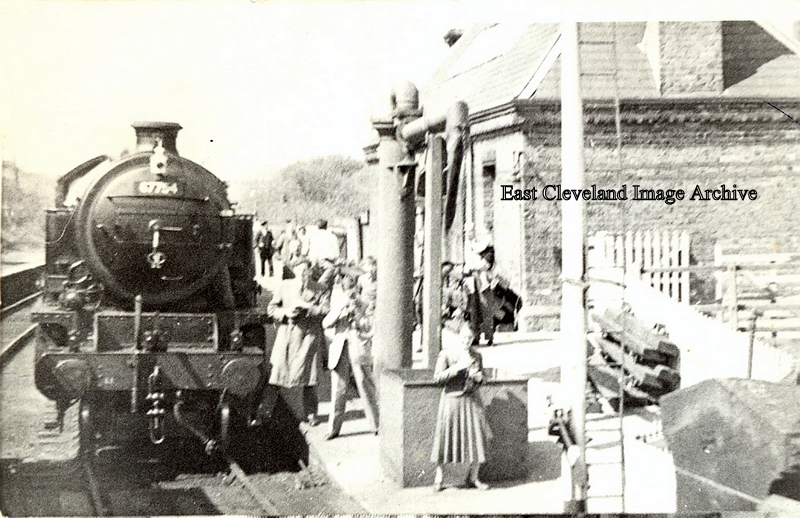
Loftus Station on the last day of through passenger services to Scarborough on the Coast Line, May 1958.
Image courtesy of Alan Richardson
|
|
||
 Loftus Station on the last day of through passenger services to Scarborough on the Coast Line, May 1958. Image courtesy of Alan Richardson 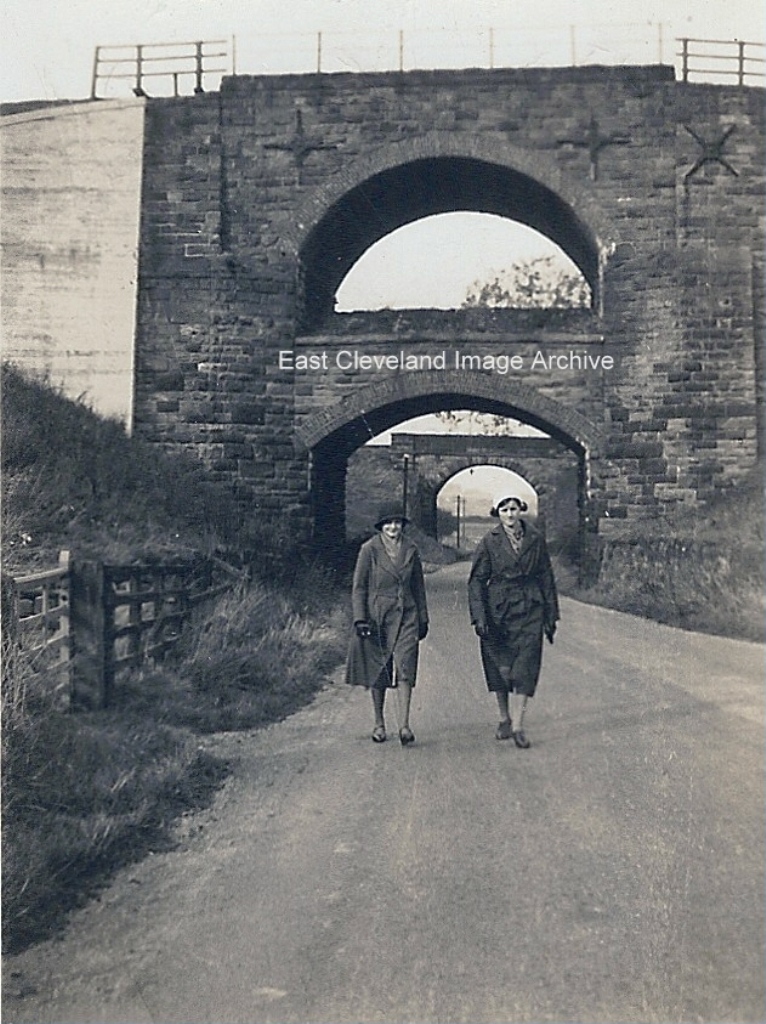 Claphow bridges in the 1940s, I would not advise walking along the road in this manner today. It is now known that the two ladies are: ”Two sisters (left to right); Joan and Emily Greensitt whose family owned a guest house on Marine Parade, Saltburn. The image was taken of them taking a leisurely stroll through the Claphow bridges about 1940” 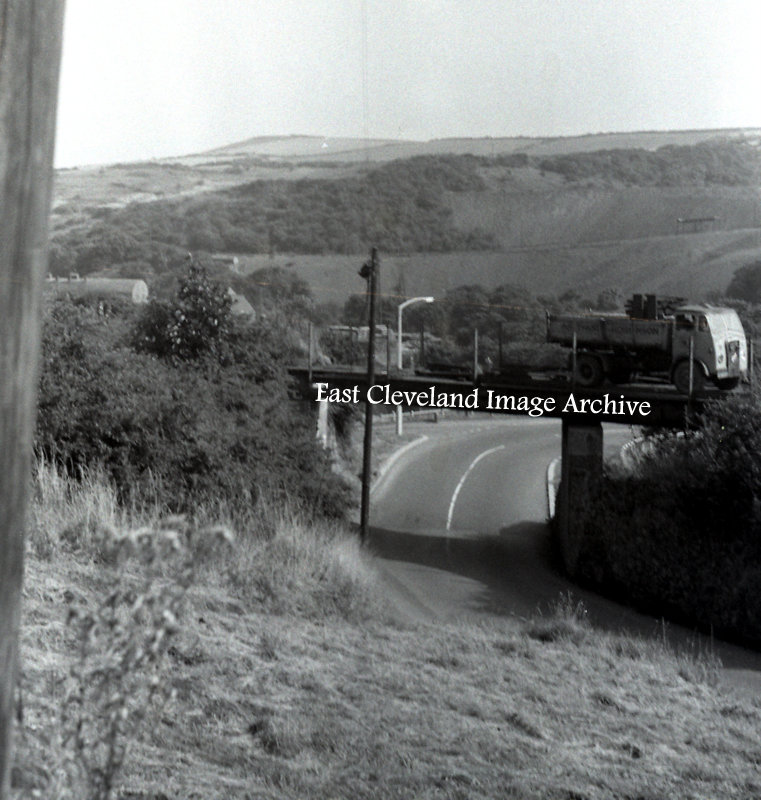 Removing the rails from the bridge down to Skinningrove on the Zig Zag railway, just below the hairpin bend on Carlin How bank. Work undertaken by Darlington District Engineers Department, prior to the bridges demolition, about 1958. Image courtesy of Ken Loughran. 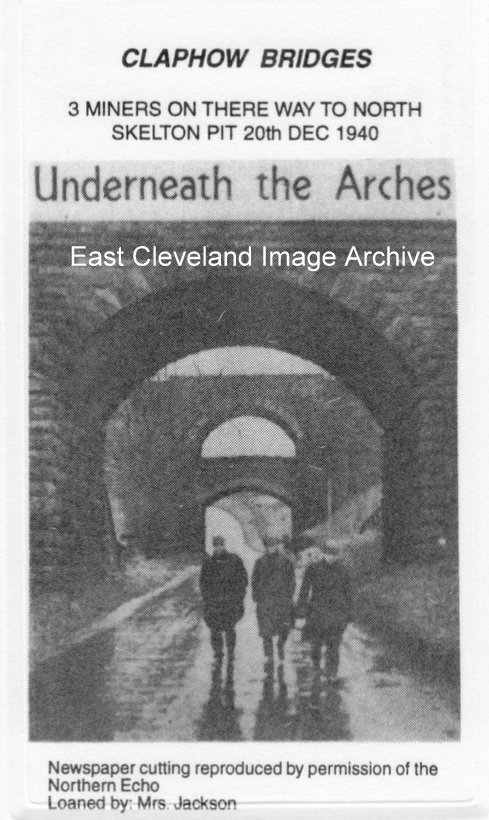 It must have been a wet walk that day, judging by the dress of the miners and the shining road. We asked ”More importantly can anybody identify the men?” and Paula Miller now tells us ”This is the Moody brothers of Lingdale”. Image courtesy of Jeff Templeman and many thanks to Paula Miller for that update. 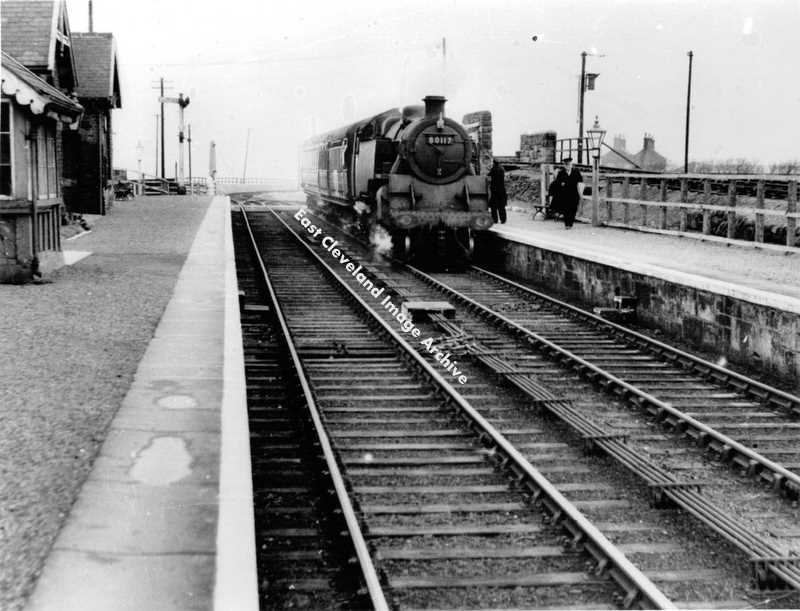 Kettleness Station with locomotive a Standard 2-6-4, Tank engine which is westbound to Loftus. Image courtesy Maurice Grayson. 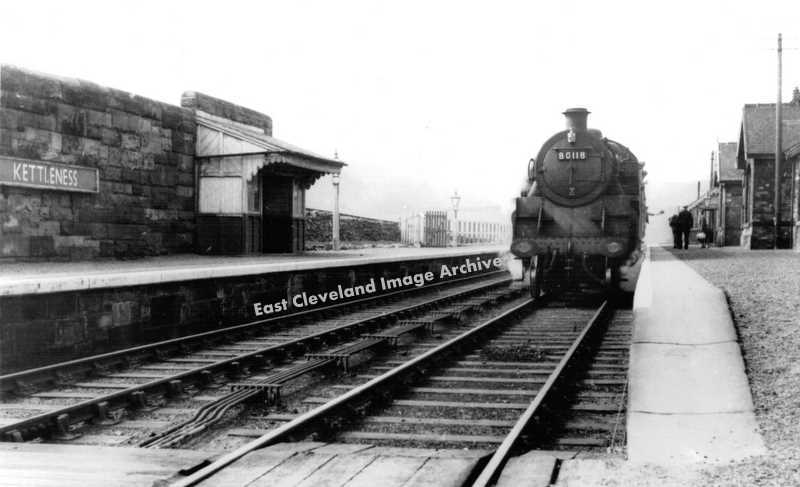 Train departing Kettleness towards Whitby, the guard at the rear of the train appears to be waving his flag, for the driver to start away. Image courtesy Maurice Grayson. 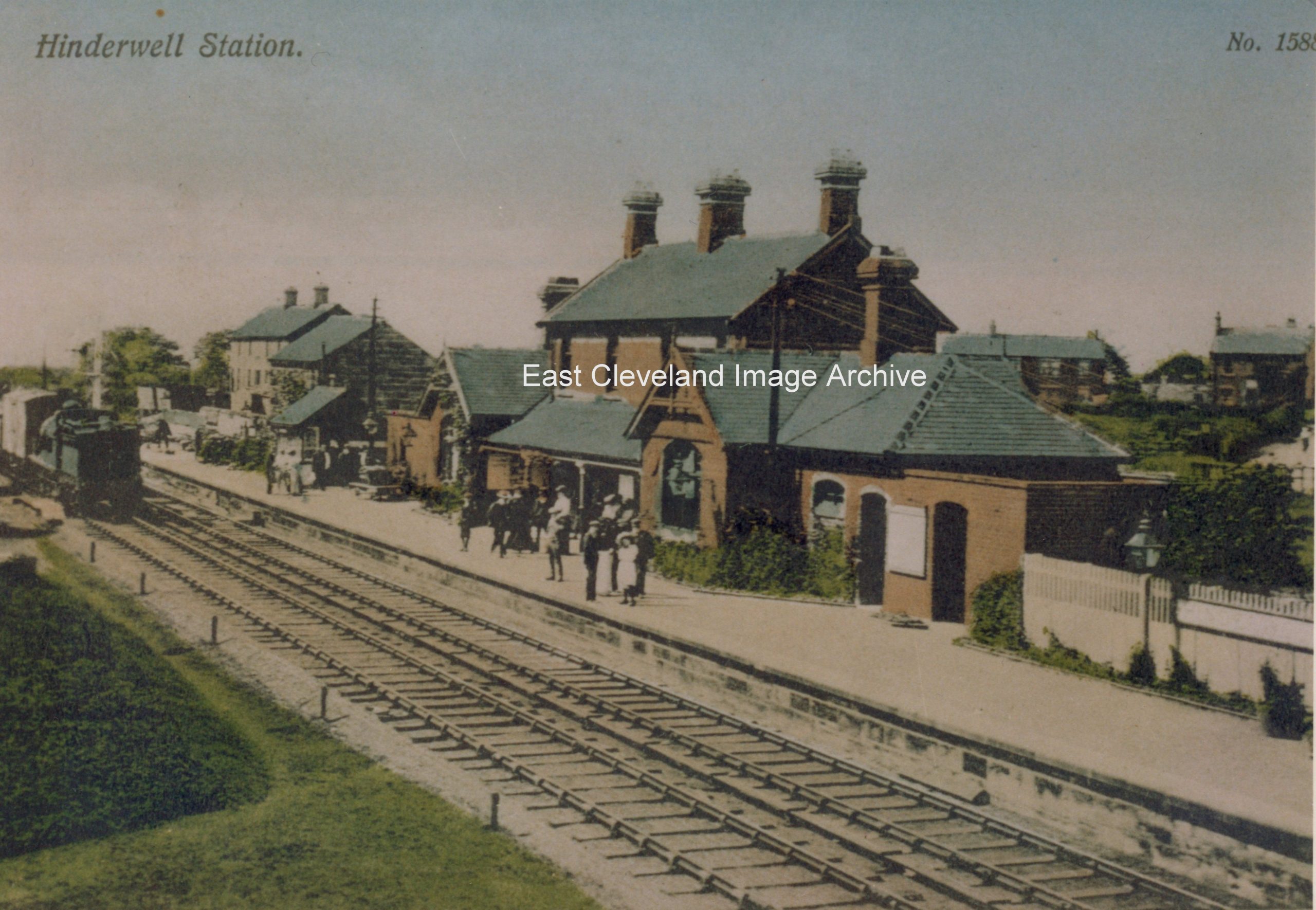 A hand tinted postcard view of Hinderwell station, possibly dating from early 1900s, no details were to be gained from the reverse of this image, so the Archive would welcome dating information. Hinderwell as with Easington, Staithes, Kettleness and Sandsend stations, built to the same design. Possibly disconcerting to passengers alighting on a dark evening, especially if they had dozed on their journey and woken abruptly at their hoped for destination! Image courtesy of The David Linton Collection. 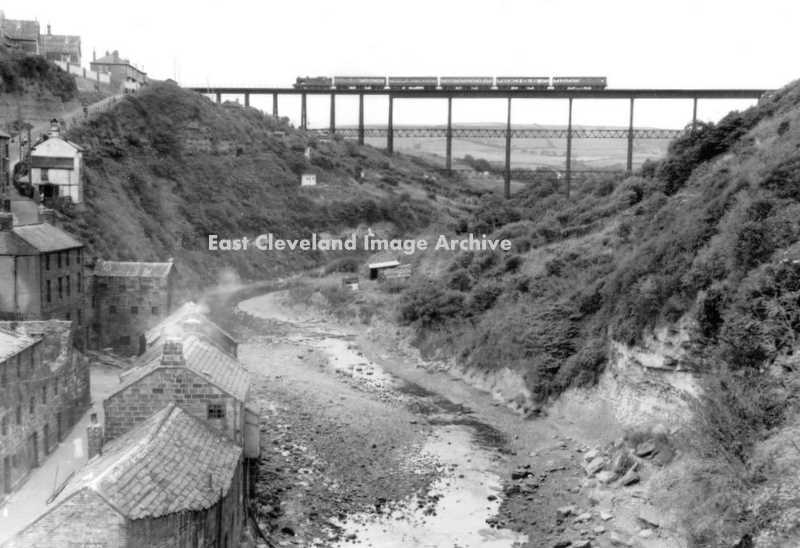 A view the viaduct from downstream, looking inland. The train is heading towards Staithes station. Chris Davies tells us:”The engine is a Raven/Gresley A8 4-6-2t hauling a train of ex-NER and a Thompson suburban brake of the LNER.” Francois Andre Greef advises: “I deduce from the way the river flows beneath the photographer that he was standing on the old trestle bridge at the Granary Yard, and not on the “Lower Bridge”, which rested on stone bulwarks. The old bridge was where the stepping stones are today.” Image courtesy Maurice Grayson, thanks to Chris Davies and Francois Andre Greef for the updates.
Staithes Viaduct with a local commuter train, powered by a British Railways “Standard” tank engine. This photograph was probably taken towards the end of the line’s existence, a two carriage train indicating the decline of rail traffic as increased fares and better road links caused migration away from the railways. Simon Chapman advised: “All that remains now are the concrete piers that supported the steelwork. In view is the stone abutment which supported the west end. The east end abutment; also of stone was demolished”. Image courtesy of Maurice Grayson and Jean Hall, thanks to Simon Chapman for the last piece of information.
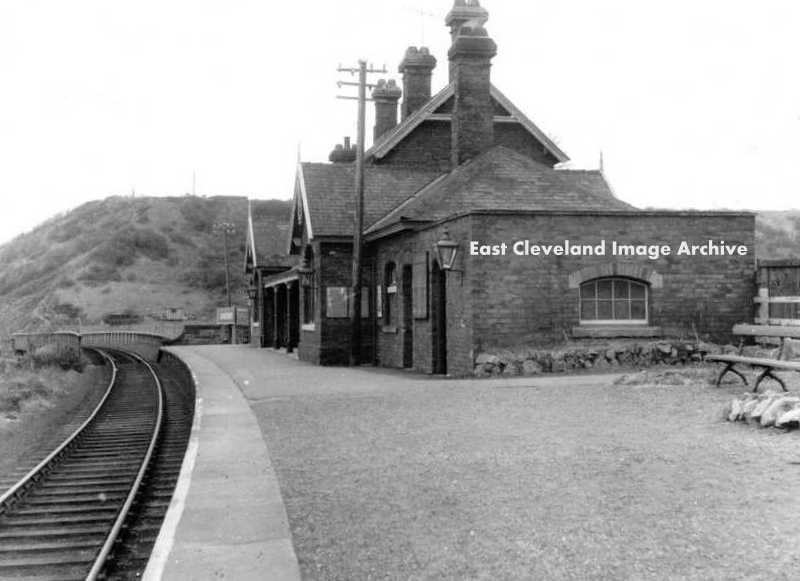 A view of Sandsend railway station viewed from the west, looking towards the hill at the bottom of which is the road and present day protruding pedestrian walkway. Image courtesy of Maurice Grayson. |
||
Recent Comments